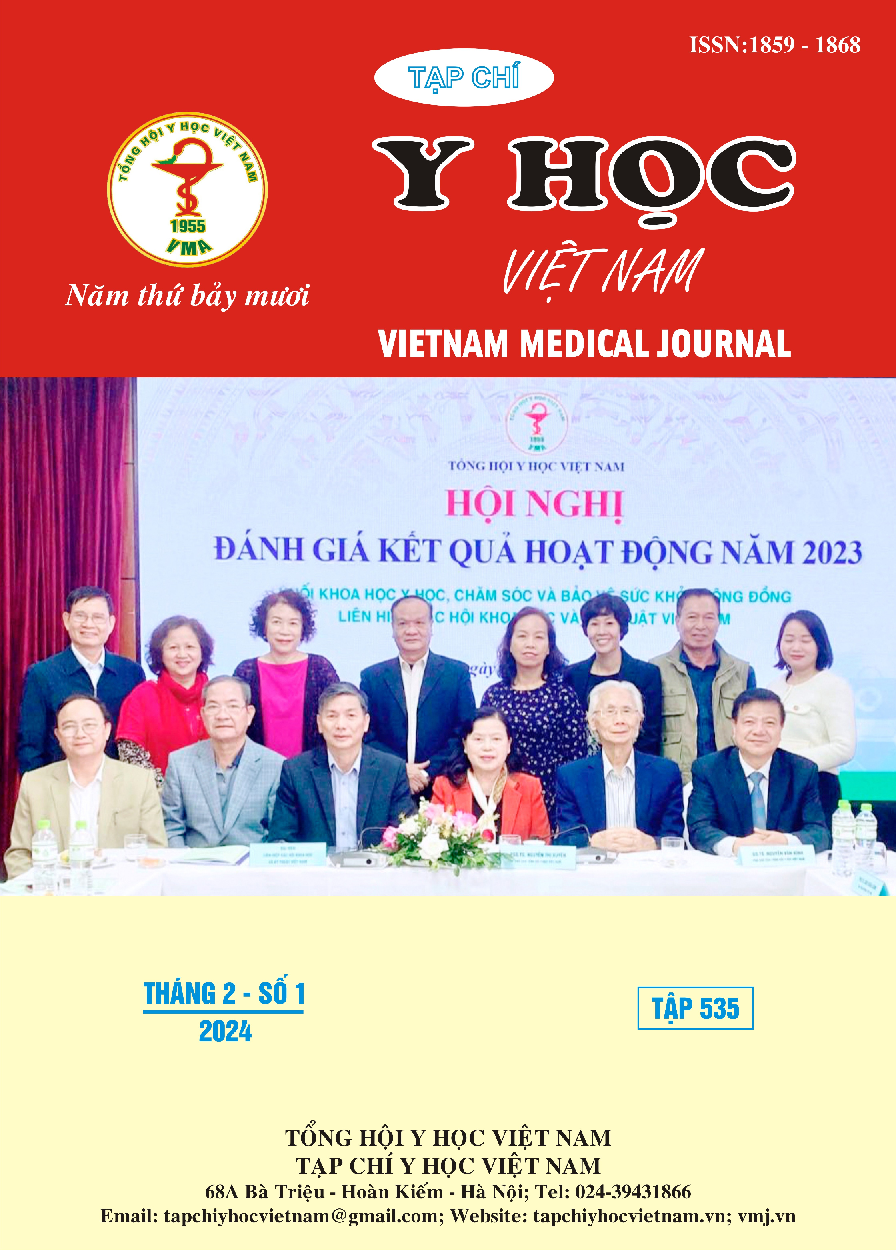HUMAN RESOURCES OF MEDICAL STAFF FOR ACUTE ISCHEMIC STROKE PATIENTS AT 6 MILITARY HOSPITALS IN NORTHERN VIETNAM
Main Article Content
Abstract
Objectives: Evaluate the human resources in emergency care for acute ischemic stroke (AIS) patients at 6 military hospitals in Northern Vietnam in 2022. Subjects and methods: Prospective, cross-sectional study. The assessment focused on the human resources in the emergency stroke team of 6 Northern Region Military Hospitals, considering factors such as quantity, structure, professional expertise, and information technology skills. Results: All six hospitals have established specialized teams with specific protocols for treating AIS. The majority of personnel hold a bachelor's degree or higher (61.5%), possess extensive medical experience (18.2 years), and specific stroke-related expertise (16.7 years). The structure of the specialized fields is considered relatively comprehensive according to the guidelines of the Ministry of Health. However, the information technology skills of the AIS emergency personnel are relatively basic. Conclusion: The hospitals have effectively organized emergency personnel to manage NMNC patients, meeting the demands for AIS caring.
Article Details
References
2. Powers, W.J., et al., Guidelines for the Early Management of Patients With Acute Ischemic Stroke: 2019 Update to the 2018 Guidelines for the Early Management of Acute Ischemic Stroke: A Guideline for Healthcare Professionals From the American Heart Association/American Stroke Association. 2019. 50(12): p. e344-e418.
3. Alberts, M.J., et al., Acute stroke teams: results of a national survey. National Acute Stroke Team Group. Stroke, 1998. 29(11): p. 2318-20.
4. Nilanont, Y., et al., Comparing performance measures and clinical outcomes between mobile stroke units and usual care in underserved areas. Neurological Sciences, 2023. 44(4): p. 1261-1271.
5. Widimský, P., I. Stetkarova, and H. Malíková, Interdisciplinary cooperation for a maximum acceleration of availability of modern therapy for ischemic stroke for all patients in need of endovascular thrombectomy. Vnitrni lekarstvi, 2019. 65: p. 606-609.
6. Alberts, M.J., et al., Recommendations for the establishment of primary stroke centers. Brain Attack Coalition. JAMA, 2000. 283(23): p. 3102-9.
7. Katzan, I.L., et al., Use of tissue-type plasminogen activator for acute ischemic stroke: the Cleveland area experience. JAMA, 2000. 283(9): p. 1151-8.


